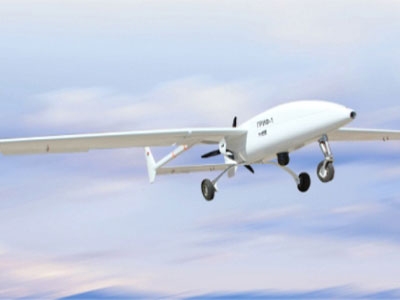
Vietnam has announced it has succeeded in manufacturing unmanned aerial vehicles (UAV) which would be put into both civil and military services. The country is also seeking foreign supply sources.
Vietnam has announced it has succeeded in manufacturing unmanned aerial vehicles (UAV) which would be put into both civil and military services. The country is also seeking foreign supply sources.

On May 3, 2013, on the Hoa Lac flight testing site, the Vietnam Academy of Science and Technology successfully organized the test flights of 3 out of the 5 manufactured UAV prototypes.
The five UAVs have been created by scientists from the academy within a program entitled “Studies and manufacture of unmanned aerial vehicles for scientific research purposes”. Dr Pham Ngoc Lang chairs the program.
These five UAVs include AV.UAV.MS1, AV.UAV.S1, AV.UAV.S2, AV.UAV.S3 and AV.UAV.S4. All of them are manufactured locally, with domestically produced materials.
According to Lang, scientists began their research in 2008 to create these prototypes.
Professor Dr. of Science Do Trung Ta, Chair of the National Committee of the Policies for Sciences and Technologies, commented that this is a very important event, which marks a milestone in Vietnam’s science research development.
He said that Vietnam, when carrying out scientific research, can take full advantage of a new comer who can utilize the most advanced technologies.
According to Dr. Lang, the most important significance of the successful testing of UAV prototypes is that it shows that Vietnam now can master the high technology in developing UAV.
Vietnam can buy UAVs from foreign sources, but only under the purely commercial contracts, without the technology transfer. This means that when troubles occur during the operation, Vietnam would have to import equipments and accessories from the supply sources and pay money to hire foreign specialists.
Also according to Lang, Vietnam now can undertake all the phases of the UAV manufacturing process, from researching, basic designing, manufacturing designing, composite materials. The parts for the automatic flight control units have been imported as separated parts, while Vietnam does not intend to use popular parts for the security reason.
The only two parts Vietnam still cannot make itself are the engine and propellers which it has to import from Japan and France.
After the successful testing flights, 6 UAVs have been used to serve the scientific research.
On May 17-19, the UAVs implemented the duties of recording, taking pictures and measuring the spectrum of the natural subjects on the earth to standardize the remote sensing data images collected from satellites. The fly zone was the Lac Duong district in Lam Dong province.
This is a very important part of the program on developing sciences and technologies to serve the socio-economic development in the Central Highlands, called the Tay Nguyen 3 Program.
Prior to that, this work was still done with manned aircrafts, each of which costs tens of thousands of dollars.
The announcement by Vietnam on successfully manufacturing UAV has caught the special attention from the world.
Xinhua News has commented that the achievement showed the great success of Vietnam in its efforts to penetrate the international UAV market.
The Diplomat wrote that the Vietnamese military science has made a breakthrough when the smallest of the UAVs can fly at the speed of 70 kilometers per hour within a radius of 2 kilometers and the maximum height of 200 meters, while the biggest can fly at the speed of 180 kilometers per hour within a radius of 100 kilometers and the maximum height of 3,000 meters.

 Previous page
Previous page Back to top
Back to top







